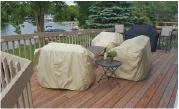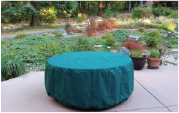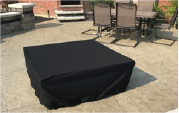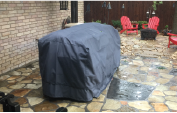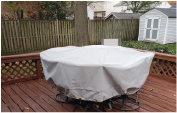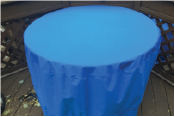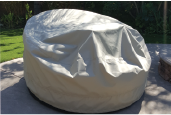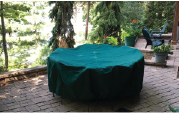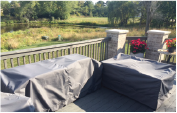
When it comes to protecting your outdoor furniture, there are two popular routes people take: covers or coatings. Both have their pros and cons and do their job in their own way. But what’s the best way to fight back against the elements? How do you make that choice?
In this guide, we will answer the ultimate question of covers vs. coatings - what’s best for outdoor furniture protection? We will discuss what works, what’s just marketing hype, and what will save you cash (and headaches) in the long run.
Why Does Outdoor Furniture Need Protection?
If you think your patio furniture is safe just because it’s labeled "weather-resistant," think again. Nature does not care what the label says. UV rays bleach fabrics, rain causes rust, and snow cracks wood. Even "all-weather wicker" turns brittle over time.
Whether you spent $200 or $2,000 on your setup, without proper outdoor furniture maintenance, your stylish patio can end up looking aged within a single season.
Do You Need Outdoor Furniture Covers?
Outdoor furniture covers are heavy-duty, waterproof, or water-resistant fabric sheets designed to wrap over your patio chairs, tables, grills, and loungers.
Pros of Using Outdoor Furniture Covers:
- Full-body Armor: Covers shield your furniture from sun, rain, dirt, and even pollen.
- Reusable & Removable: You can take them off during sunny days and toss them back on when the weather turns.
- Waterproof Options Available: High-quality waterproof outdoor covers keep everything bone-dry underneath.
- Custom Fits: Many brands, like National Patio Covers, offer tailored patio furniture covers for everything from sectionals to swing sets.
Cons:
- You have to remember to use them. If you're lazy, covers won’t do their job in the shed.
- They can look a little bulky, but they do the job pretty well. The best part is that you can get them in many different colors and fabrics to match your likes.
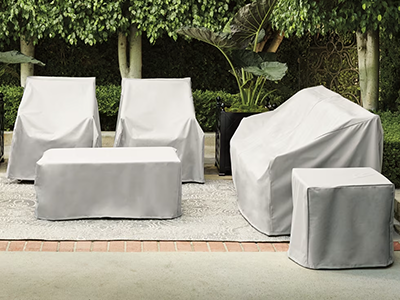
What Are Protective Coatings?
Protective coatings are chemical sprays, oils, or sealants applied directly onto your furniture. They promise to create a barrier between the material and the environment. Common types of coatings are:
- Water-repellent sprays for fabrics
- UV-protectant coatings for plastic and resin
- Clear sealants or varnishes for wood
- Primers and paints for metals
Pros of Using Coatings:
- Invisible Shield: Your furniture looks the same without any extra bulk or visual clutter.
- Convenient: Once applied, you don’t have to remember to cover anything daily.
- Great for Hard Materials: Wood, metal, and plastic can all benefit from a coating layer.
Cons:
- Limited Lifespan: Coatings wear off. Rain, sun, and time eat away at the protective layer.
- Reapplication is a Must: If you forget to reapply every few months, you’ll ruin your furniture.
- Not Waterproof in the Long Run: Honestly, no spray-on coating is 100% reliable in monsoon-like conditions.
- Labor-Intensive: Requires surface preparation, a clean, dry surface, application equipment like brushes or sprayers, and drying time to begin with.
Covers vs. Coatings for Outdoor Protection: Comparison Table
Let’s pit these two methods against each other in a side-by-side comparison.
Feature | Outdoor Furniture Covers | Protective Coatings |
Water Protection | Fully waterproof, which means it repels rain and snow. | Water-resistant at best. The coatings wear off quickly and need frequent reapplication. |
UV Defense | Complete UV blockage prevents sun fading and cracking of the furniture. | Partial UV protection. The coating itself degrades under strong sun exposure |
Maintenance Needs | Minimal, needs occasional cleaning | Moderate to high as reapplication on required every few months. |
Multi-Material Coverage | One cover can protect a variety of materials like cushions, sofa seats, and more. | Material-specific. It requires different coatings for each surface |
Durability | High-quality furniture covers easily last 4-5 years with proper care | Typically lasts 2-6 months before needing to be reapplied |
Protection Coverage | Covers the entire item (top, sides, legs, etc.) | Only protects exposed surfaces; areas underneath or between furniture parts stay bare |
Cost Over Time | One-time investment for long-term use | Repeated purchase costs add up quickly |
Steps to Make the Right Choice
- Assess your Environment: Knowing your climate helps you choose whether UV-blocking coatings, waterproof covers, or both are a must.
- Check Furniture Needs: Different materials demand different protection—wood needs sealing, metal needs rust-blockers, and plastic needs UV defense.
- Price: Compare the costs of high-quality covers and reliable coatings. Don’t just grab the cheapest option.
- Plan Maintenance: Ask yourself: Will you recoat every year or wash covers monthly?
- Combine Strategies: In many cases, layering both coatings plus covers. gives the ultimate shield.
If you skip both covers and coatings, your outdoor furniture is basically unprotected.
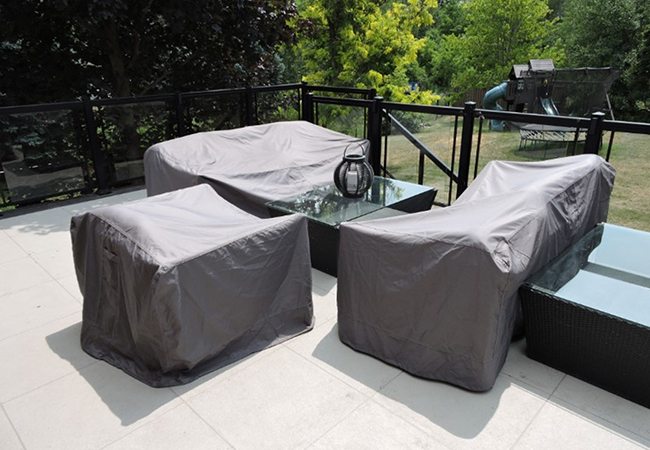
The Hybrid Approach: The Smart Way to Protect Your Patio
If you’re serious about outdoor furniture maintenance and want your setup to survive years then don’t choose between covers and coatings. Use both. Start by applying a high-quality protective coating to wood, metal, or fabric surfaces to create a base-level shield against moisture, UV rays, and grime. Then, throw on waterproof outdoor covers for full-body protection that defends against rain, sun, dirt, and surprise bird strikes. It’s smart because relying on one method is not just enough.
How Often Should You Use Covers?
The answer is every single day. Leaving your furniture uncovered "just this once" during a sunny afternoon is a slippery slope. Then it rains unexpectedly. Then you forget again. If your outdoor area isn’t covered or screened-in, use your covers religiously. They’re not decoration, they’re your first line of defense.
Conclusion
If you need a quick, surface-level defense, coatings may work for a short while. However, if you want durable, low-maintenance, all-season protection, outdoor covers clearly are the winner.
So, when it’s time to prep your patio for the elements, skip the quick fixes. Go with a durable, custom-fit cover that’s built to outlast the weather. Because when it comes to protecting what you love outdoors, nothing performs like a cover made just for it.

_1.png)
